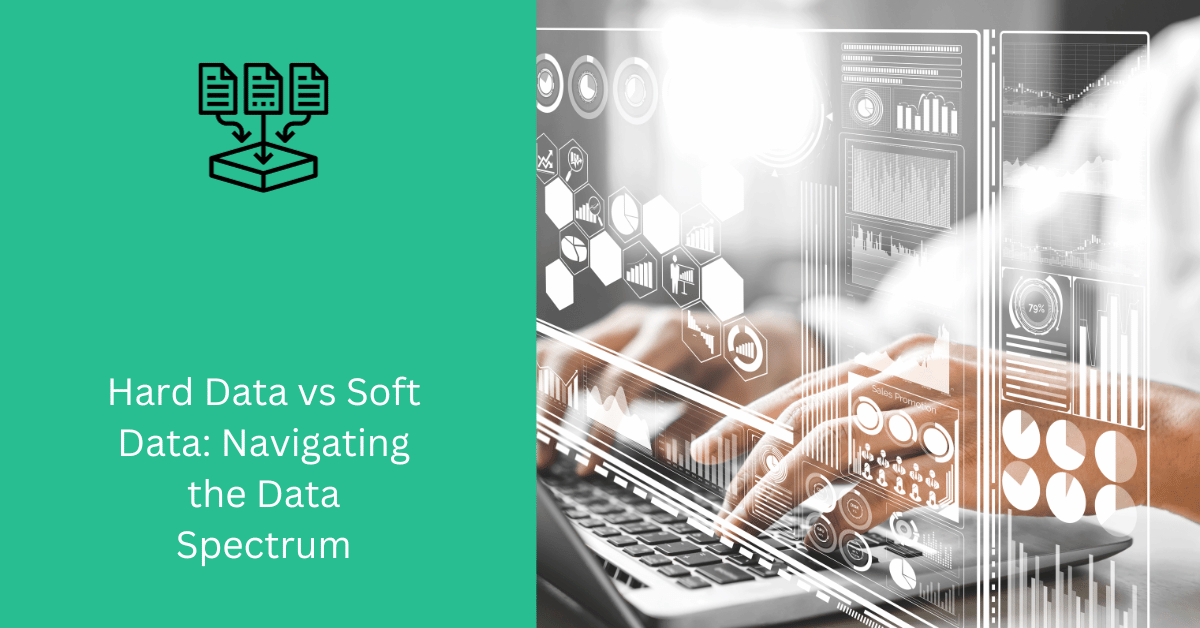
In the realm of data, distinctions between hard and soft data play a pivotal role in shaping decision-making processes. Let’s delve into the nuances between these two types of data, exploring their definitions, examples, and the efficient automation of data gathering through web scraping.

What is Hard Data?
Hard data, often referred to as quantitative data, involves measurable and objective information. This type of data is concrete, precise, and typically expressed in numerical terms. Hard data forms the backbone of statistical analyses and provides a solid foundation for drawing conclusions.
Hard data refers to factual, measurable, and objective information that is quantifiable and expressed in numerical terms. This type of data provides a solid and verifiable foundation for analysis and decision-making. Hard data is characterized by its precision and objectivity, making it an essential component in various fields such as statistics, research, and analytics.
In essence, hard data represents tangible figures and statistics that are not open to subjective interpretation. Examples of hard data include numerical measurements, statistics, and quantifiable metrics, forming the backbone of evidence-based decision-making processes.
What are Hard Data Examples?
Examples of hard data include:
- Sales Figures: Concrete numbers reflecting the monetary value of products or services sold.
- Temperature Readings: Accurate measurements of temperature, devoid of subjective interpretation.
- Population Statistics: Quantifiable data about the number of individuals in a given area.

What is Soft Data?
Contrastingly, soft data, also known as qualitative data, is subjective, interpretive, and often challenging to quantify precisely. Soft data is rooted in opinions, observations, and perceptions, providing a more nuanced understanding of complex phenomena.
Soft data refers to qualitative, subjective, and interpretive information that provides nuanced insights into complex phenomena. Unlike hard data, soft data is not expressed in numerical terms; instead, it encompasses descriptive narratives, opinions, and observations. This type of data is characterized by its subjectivity, allowing for a more comprehensive understanding of aspects that are challenging to quantify precisely.
Examples of soft data include customer feedback, employee morale, and user experience. These insights are rooted in individual perceptions, sentiments, and qualitative assessments. Soft data adds depth to analyses by capturing the human element and offering a richer context to decision-makers.
While soft data may be less precise than its hard data counterpart, its interpretive nature provides valuable context and understanding, making it a valuable asset in areas where quantitative measures alone may fall short. In essence, soft data contributes to a holistic view of situations, fostering a more comprehensive approach to decision-making.
What are Soft Data Examples?
Examples of soft data encompass:
- Customer Feedback: Opinions, comments, and reviews expressing subjective experiences with a product or service.
- Employee Morale: Qualitative insights into the overall job satisfaction and feelings of employees.
- User Experience: Perceptions and sentiments about the usability and design of a website or application.
Hard Data vs Soft Data: A Comparative Overview
The main differences between hard and soft data are conveniently summarized in the table below:
| Aspect | Hard Data | Soft Data |
| Nature | Quantitative, measurable, objective | Qualitative, subjective, interpretive |
| Representation | Numerical values, statistics | Descriptive narratives, opinions |
| Precision | Precise and concrete | Subject to interpretation, less precise |
| Analysis Approach | Statistical methods, mathematical models | Thematic analysis, content analysis |
| Common Examples | Sales figures, temperature readings, statistics | Customer feedback, employee morale, opinions |

Automating Hard and Soft Data Gathering with Web Scraping
In the evolving landscape of data acquisition, web scraping has emerged as a powerful tool for automating the gathering of both hard and soft data from various online sources. Web scraping involves the extraction of data from websites, enabling a systematic and efficient approach to collecting quantitative and qualitative information.
For hard data, web scraping can be utilized to extract numerical values, statistics, and other measurable metrics from online platforms. This process allows for the automation of data retrieval, ensuring accuracy and speed in gathering concrete, numerical information.
In the realm of soft data, web scraping proves equally valuable. The technique can be employed to extract qualitative insights, opinions, and descriptive narratives from websites, forums, or social media platforms. This enables businesses and researchers to systematically collect subjective information, contributing to a more comprehensive understanding of user sentiments, feedback, and experiences.
By automating the process of data gathering through web scraping, organizations can save time, reduce manual efforts, and ensure the consistency of data collection. Whether extracting sales figures for statistical analysis or aggregating user reviews for qualitative assessments, web scraping serves as a versatile and efficient solution for harnessing both hard and soft data in the digital age.
FAQ
What is Hard Data?
Hard data refers to factual, measurable, and objective information expressed in numerical terms. It provides a solid foundation for analysis and decision-making, known for its precision and objectivity.
What are Examples of Hard Data?
Examples of hard data include sales figures, temperature readings, and population statistics—quantifiable metrics that form the basis for statistical analyses.
How is Hard Data Used in Decision-Making?
Hard data is crucial in evidence-based decision-making processes, allowing for precise and objective analysis. It serves as a reliable basis for drawing conclusions in various fields such as research, statistics, and analytics.
What is Soft Data?
Soft data refers to qualitative, subjective, and interpretive information that provides nuanced insights into complex phenomena. It is characterized by descriptive narratives, opinions, and observations.
What are Examples of Soft Data?
Examples of soft data include customer feedback, employee morale, and user experience—qualitative insights rooted in individual perceptions and sentiments.
How Does Soft Data Differ from Hard Data?
Soft data differs from hard data in its qualitative nature. While hard data is measurable and objective, soft data is subjective and interpretive, capturing aspects that are challenging to quantify precisely.
Why is Soft Data Valuable?
Soft data adds depth to analyses by providing context and understanding, especially in areas where quantitative measures alone may fall short. It contributes to a holistic view of situations.
Can Web Scraping Gather Both Hard and Soft Data?
Yes, web scraping is a versatile tool that can automate the gathering of both hard and soft data. It can extract numerical values for hard data and qualitative insights for soft data from various online sources.
How Does Automating Data Gathering Benefit Businesses?
Automating data gathering through tools like web scraping saves time, reduces manual efforts, and ensures the consistency of data collection. This efficiency is valuable for evidence-based decision-making in business strategies.
Are Hard Data and Soft Data Equally Important?
Both hard data and soft data are equally important in decision-making. A balanced approach that considers both quantitative and qualitative aspects provides a more comprehensive understanding of various scenarios.





